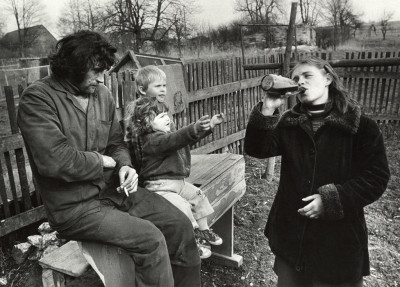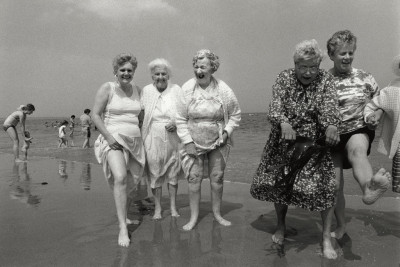
Honnos My Fiddler
Pentti Sammallahti
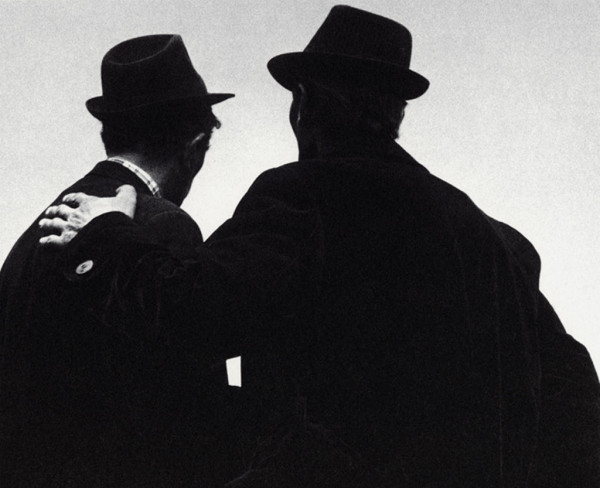
Honnos My Fiddler
Pentti Sammallahti
- Photographic
- Communities
- International Documentary
- Place
- Portraits
- Rural Locations
- 1980 – 1989
- World
Finnish photographer Pentti Sammallahti visited Transylvania in the early 1980s to document the lives of Romani communities living in remote villages across the region. His black-and-white images are rooted in a quiet attentiveness to daily life, portraying family ties, traditions and the bonds between people and animals. The series captures both the harshness and warmth of rural existence, with Sammallahti’s distinctive eye for light and landscape giving the work its lyrical quality. Upon publication these works were accompanied by poems by the artist's brother Pekka Sammallahti.
The connection between Sammallahti and AmberSide came through Sirkka-Liisa Konttinen, who invited him to contribute to Side Gallery’s international programme. He later supported Konttinen in the production of her 2000 book Writing in the Sand. As with much of Sammallahti’s work, Honnos My Fiddler offers a contemplative portrait of marginalised communities, grounded in a deep respect for the people and places he photographs.
Pentti Sammallahti is a Finnish photographer known for his meticulously composed black and white images that blend landscape, animal life and the quiet rhythms of everyday existence. Born in Helsinki in 1950, he began photographing in his early teens and became one of Finland’s most internationally recognised photographers. Deeply influenced by the humanism of French photography and the poetic sensibilities of his native Nordic environment, his work often evokes a sense of stillness and contemplation.
I
You begin to think of the years,
each one of them by name:
the Year when Joy was born
and the Year of Fame.
Recall:
the Rains Came Late That Autumn,
White, and Black as Coal,
the World’s Roar and Thunder,
the Year when You Grew Whole.
II
The dispirited houses of rulers.
The proscribed colours,
the senescent gold of churches.
The bouncing highways of pale dust,
the forests grown into cohorts,
the scabby legs of the children in village outskirts.
III
Darting caravans of tarnished trains,
the redeeming introversion of gates,
the soporific vibrations of slow wagons,
The rubber-like sound of fresh walnut.
Stirring shadows of roadside trees,
positive hens in purposeful alleys,
optimistic plumb trees in gardens,
the smell of tobacco, liquor, infrequent coffee,
rolling songs of the embracing nights.
The time is fulfilled again grandmother’s father dies,
fathers step out from their backyards, mothers form food chains of their own,
laugh, clatter in the kitchen, squabble, stew cabbage, slaughter a pig.
The monotonous houses of rulers.
Receding fathers.
carrying their children…
IV
Have you thought about the Tisza
how it flows.
V
“You go first,” said one twin brother,
an old man, to the other.
“No, you,” the other answered,
born later,
patting him on the back and nudging him lightly, with a caress,
his hand growing bony.
I watched them from behind on a cloudy day,
lying on a hillock.
According to the higher revelation I received,
this had already begun quite early:
the one who went ahead was born first,
nudged by the other coming behind.
VI - Your Native Land (to Jaan Kaplinski)
When you are gone and set your feet again
on familiar land,
its dust, its colours, when the white birches
wind their branches
about your head
and you hear the buds growing
with a humming in your ears,
it will be ever the harder
to remember more and more:
the Pole Star’s ascent,
descent,
its movement no broader than a hand
above your head, the drowsy clanking of trains,
the brazen glare of the halogen lamp.
Inside your head, this small
northern land
becomes smaller and smaller,
bigger and bigger become
tomorrow’s morning tea,
sage, red tomatoes,
the unending succession of
future mornings.
VII
I turned around
and there she stood,
regarding a generation
of which she could have no first hand
information.
No, grandmother.
It was timeless youth I was thinking of,
its doors growing heavy,
the rusting of locks,
and how people are, each in his way:
at that age they don’t go to school anymore,
somewhere they believe in God.
Around us even then, I guess, were
the wide sky, the earth’s vastness,
the stream of feelings crossing
the universality of solitude.
VIII
The horses whiny there on my right
on the other side of the trickle
the sausage is hot
is Ceausescu a philanthropist, I wonder.
The water in the trickle is dirty,
there is fruit in it,
brown water, but it doesn’t smell yet
soon I’ll throw this paper into it
once I have passed those on my left
in their brimmed hats
they sit there and watch
one should respect old people they talk always
about important matters
I hear the one sitting nearest saying:
– If I make it alive,
I shall buy me a hat
with a broad brim.
The others have nothing to add
and then I’m past already.
IX - Honnos, My Fiddler
Between the sound of the river,
the sound of the railway,
under the deep sky of Feketeto.
between the edges of the boxlike lorries,
between the searching looks of the police
and your dancing family,
among the loitering gorgios
you cast the sound of your trumpet violin.
By your dust-gathering boots
your little brother’s drum, it’s rumble:
you do not hear.
Before your eyes, your distant
eyes,
your sisters raise their hands
and you don’t see:
nothing goes into your eyes
but this music,
the resounding pictures
of your trumpet trumpet violin,
swift and accurate,
beginning now, now ending,
filigree works of sound.
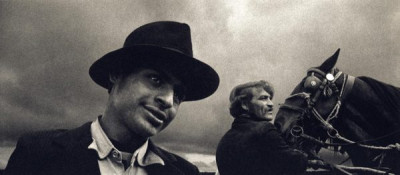
Honnos My Fiddler, 1981/1982
- Ref: 182-011-PBW
- Date: 1981/1982
- Artist: Pentti Sammallahti
- Copyright: © Pentti Sammallahti
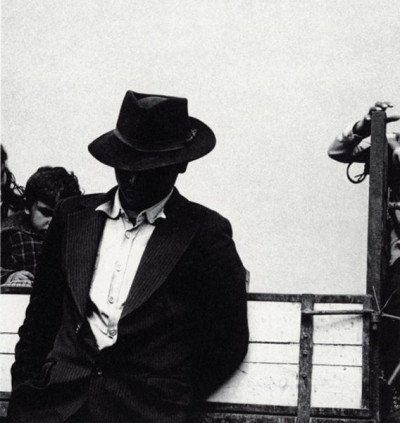
Honnos My Fiddler, 1981/1982
- Ref: 182-010-PBW
- Date: 1981/1982
- Artist: Pentti Sammallahti
- Copyright: © Pentti Sammallahti

Honnos My Fiddler, 1981/1982
- Ref: 182-006-LBW
- Date: 1981/1982
- Artist: Pentti Sammallahti
- Copyright: © Pentti Sammallahti

Honnos My Fiddler, 1981/1982
- Ref: 182-008-LBW
- Date: 1981/1982
- Artist: Pentti Sammallahti
- Copyright: © Pentti Sammallahti
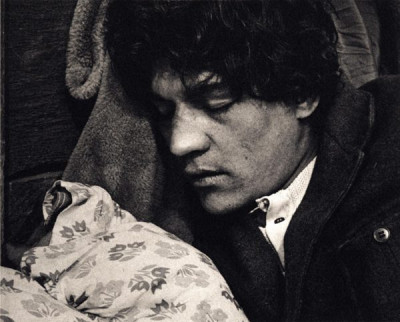
Honnos My Fiddler, 1981/1982
- Ref: 182-002-LBW
- Date: 1981/1982
- Artist: Pentti Sammallahti
- Copyright: © Pentti Sammallahti
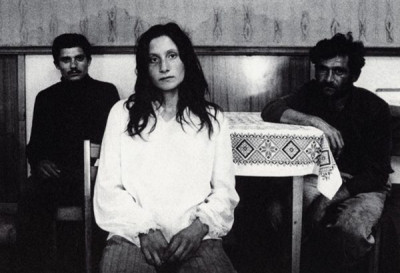
Honnos My Fiddler, 1981/1982
- Ref: 182-003-LBW
- Date: 1981/1982
- Artist: Pentti Sammallahti
- Copyright: © Pentti Sammallahti
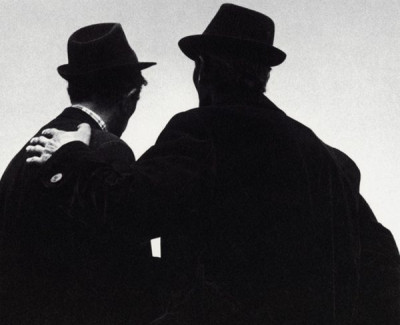
Honnos My Fiddler, 1981/1982
- Ref: 182-012-LBW
- Date: 1981/1982
- Artist: Pentti Sammallahti
- Copyright: © Pentti Sammallahti
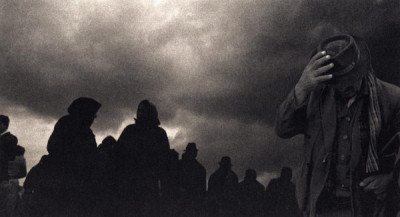
Honnos My Fiddler, 1981/1982
- Ref: 182-007-LBW
- Date: 1981/1982
- Artist: Pentti Sammallahti
- Copyright: © Pentti Sammallahti

Honnos My Fiddler, 1981/1982
- Ref: 182-009-LBW
- Date: 1981/1982
- Artist: Pentti Sammallahti
- Copyright: © Pentti Sammallahti
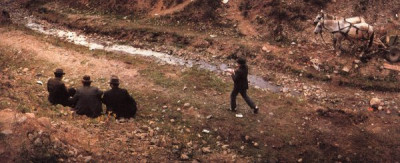
Honnos My Fiddler, 1981/1982
- Ref: 182-004-LC
- Date: 1981/1982
- Artist: Pentti Sammallahti
- Copyright: © Pentti Sammallahti
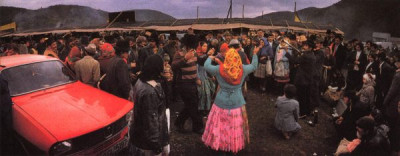
Honnos My Fiddler, 1981/1982
- Ref: 182-005-LC
- Date: 1981/1982
- Artist: Pentti Sammallahti
- Copyright: © Pentti Sammallahti

Honnos My Fiddler, 1981/1982
- Ref: 182-001-LC
- Date: 1981/1982
- Artist: Pentti Sammallahti
- Copyright: © Pentti Sammallahti
Related Works


The Russians
Dana Kyndrová
Photographic
